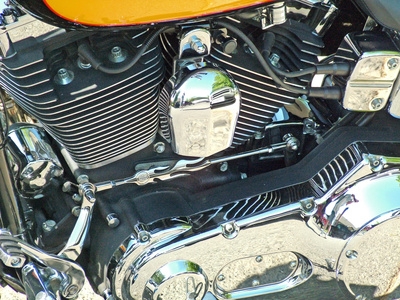
The cylinder head sits atop the engine block and holds the valves, spark plugs, valve springs and the intake and exhaust manifolds. It forms the top part of the combustion chamber, and is bolted onto the engine block with a metal, fiber or combination gasket sealing the joining. The gasket isn't as strong as the metal of the engine, however, and has to be supported completely, at every point, to survive the pressure of engine operation. There can't be any gaps along the entire surface of the engine block and the cylinder head. A gap as little as 0.002 inches can be enough for the gasket to lose support and fail. Measuring the flatness of the cylinder head is vital for the engine to do its job.
Put the cylinder head in a vise or stable platform.
Clean the surface of the cylinder head with the brake cleaner and paper towel.
Consult the shop manual for the gasket or cylinder head for the minimum gap allowed.
Take measurement across the length of the cylinder head at the top, middle and bottom and diagonally in both directions.
Place the blade of the feeler gauge on the cylinder head and lay the ruler on top of the gauge. Withdraw the gauge. If it comes out easily, there's a gap.